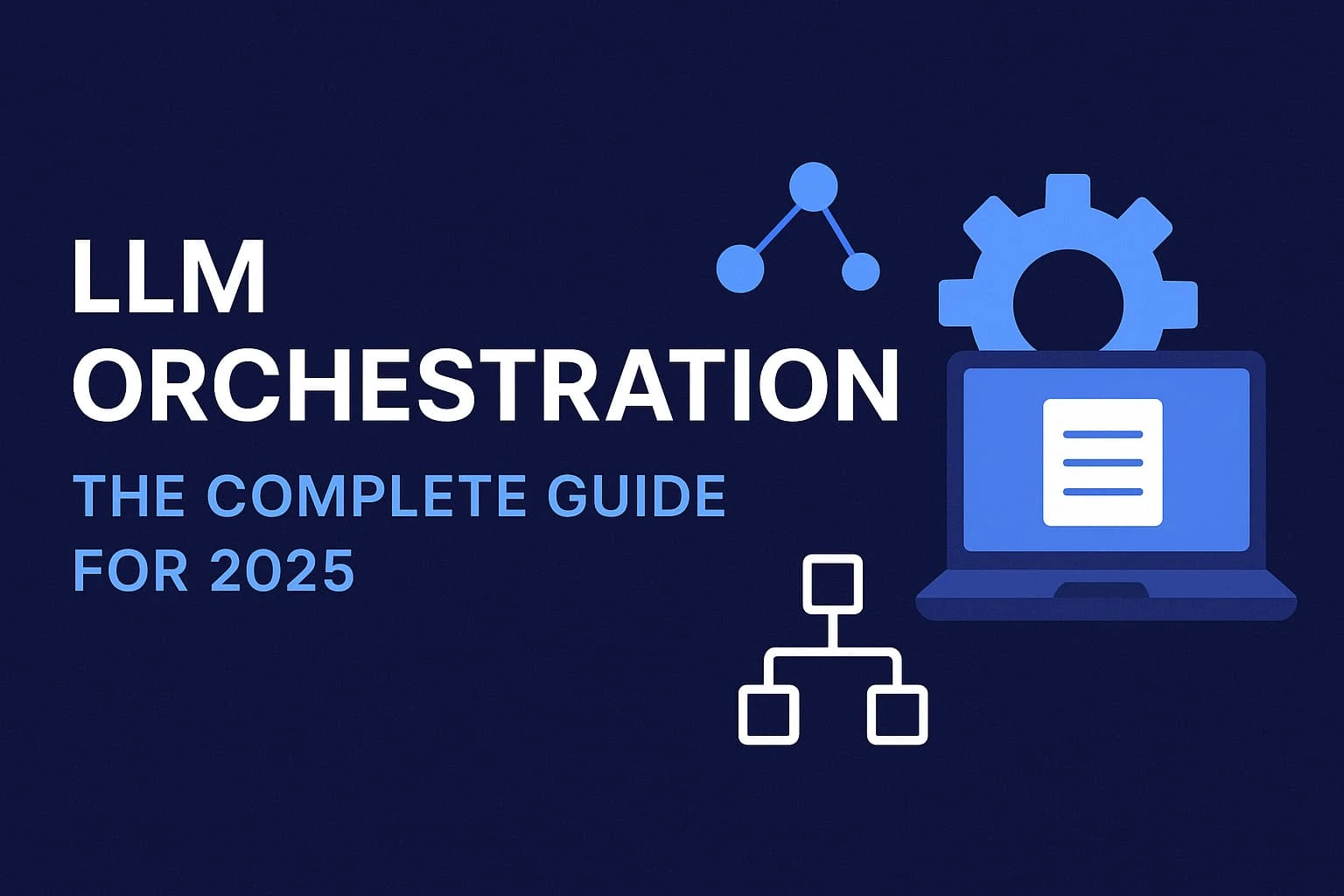
LLM Orchestration: The Complete Guide for 2025
Master LLM orchestration in 2025. Explore orchestration frameworks, enterprise use cases, and how AI agents simplify workflows.
Large Language Models (LLMs) like GPT-4, Claude, and LLaMA are becoming the backbone of business automation. But as companies adopt more AI tools, managing multiple LLMs, APIs, and workflows becomes complex. This is where LLM orchestration comes in.
LLM orchestration is the process of coordinating, managing, and automating multiple LLMs, tools, and agents so they work together seamlessly. Instead of relying on a single model, orchestration lets businesses build workflows where different models perform specialized tasks—resulting in higher accuracy, scalability, and cost efficiency.
In 2025, as enterprises adopt multi-model strategies, orchestration is no longer optional—it’s essential.
Why Do We Need LLM Orchestration?
Without orchestration, AI adoption is like running a factory without a manager. Teams may end up with:
- High operational costs from inefficient model usage.
- Fragmented workflows where tools don’t talk to each other.
- Scalability issues when serving thousands of customer requests.
With orchestration, businesses gain:
- Efficiency: Automatically assign the right model to the right task.
- Cost savings: Route tasks to smaller, cheaper LLMs when possible.
- Consistency: Standardized workflows across teams and tools.
- Scalability: Handle large volumes of tasks without sacrificing performance.
For enterprises looking to stay competitive, LLM orchestration is the key to unlocking true AI-driven automation.
How LLM Orchestration Works
Think of LLM orchestration as a conductor of an orchestra:
- Input layer – The request comes in (e.g., customer query, sales task, HR request).
- Orchestration layer – Determines which model or tool should handle the task.
- Execution layer – Routes the task to the right LLM, database, or agent.
- Output layer – Combines results and delivers the final response.
For example:
- A customer support bot may use GPT-4 for complex queries, but switch to a fine-tuned FAQ model for simple requests.
- A sales workflow might orchestrate between a lead-scoring model, a CRM system, and an outbound email generator.
This dynamic coordination is what makes orchestration powerful.
LLM Orchestration Frameworks & Tools (2025)
The rise of orchestration frameworks has made it easier for businesses to adopt multi-LLM strategies. Here are the top players in 2025:
Choosing the right framework depends on your business size, tech stack, and use case.
LLM Orchestration vs. AI Agents
Many confuse orchestration with AI agents. Here’s the difference:
- LLM Orchestration: Coordinates workflows across multiple models and tools.
- AI Agents: Autonomous systems that make decisions and act on tasks.
👉 Example:
- Orchestration ensures that a customer query is routed to the best tool.
- Agents take that tool and autonomously execute multi-step tasks (like drafting an email, logging it in CRM, and following up).
In short, orchestration is the manager, agents are the workers. Both are needed for scalable AI adoption.
Enterprise Use Cases of LLM Orchestration
Orchestration has real business impact across industries:
Sales Automation
- Score and qualify leads using smaller LLMs, escalate to GPT-4 for complex emails.
Customer Support
- Orchestrate between FAQ bots, ticketing systems, and human agents.
HR & Recruitment
- Automate candidate screening, resume parsing, and interview scheduling.
E-Commerce
- Personalize product recommendations using multiple AI models.
Knowledge Management
- Combine orchestration with RAG (Retrieval Augmented Generation) for accurate enterprise search.
Challenges in LLM Orchestration
Despite its benefits, orchestration has challenges:
- Scalability: Handling thousands of concurrent requests.
- Cost Optimization: Deciding when to use smaller vs larger LLMs.
- Security & Compliance: Protecting sensitive data in orchestrated workflows.
- Reliability: Preventing failures when one model or API goes down.
Future solutions include dynamic model routing, observability tools, and autonomous orchestration layers.
The Future of LLM Orchestration (2025 & Beyond)
In 2025 and beyond, expect orchestration to evolve toward:
- Multi-agent systems that collaborate across complex workflows.
- No-code orchestration platforms for non-technical users.
- Context-aware orchestration, where the system learns and adapts automatically.
- Agentic AI, where orchestration + agents enable fully autonomous business processes.
Businesses that adopt orchestration today will be years ahead of competitors.
How Brainey Simplifies LLM Orchestration
While frameworks like LangChain or Semantic Kernel are developer-centric, Brainey is built for businesses.
- Plug-and-play orchestration for sales, support, and HR.
- Seamless integration with CRMs, ERPs, and ticketing tools.
- Cost-efficient routing between small and large LLMs.
- Ready-made agents for verticals like recruitment, sales outreach, and customer success.
Instead of building from scratch, businesses can use Brainey as an orchestration-plus-agent solution to unlock automation fast.
Conclusion
LLM orchestration is no longer a “nice to have”—it’s the backbone of modern AI workflows. From improving sales pipelines to automating support and HR, orchestration ensures businesses get the best of AI—scalability, accuracy, and efficiency.
👉 If you want to move from AI experiments to business impact, it’s time to explore Brainey’s orchestration platform.
Get in touch today and see how orchestration can transform your workflows.